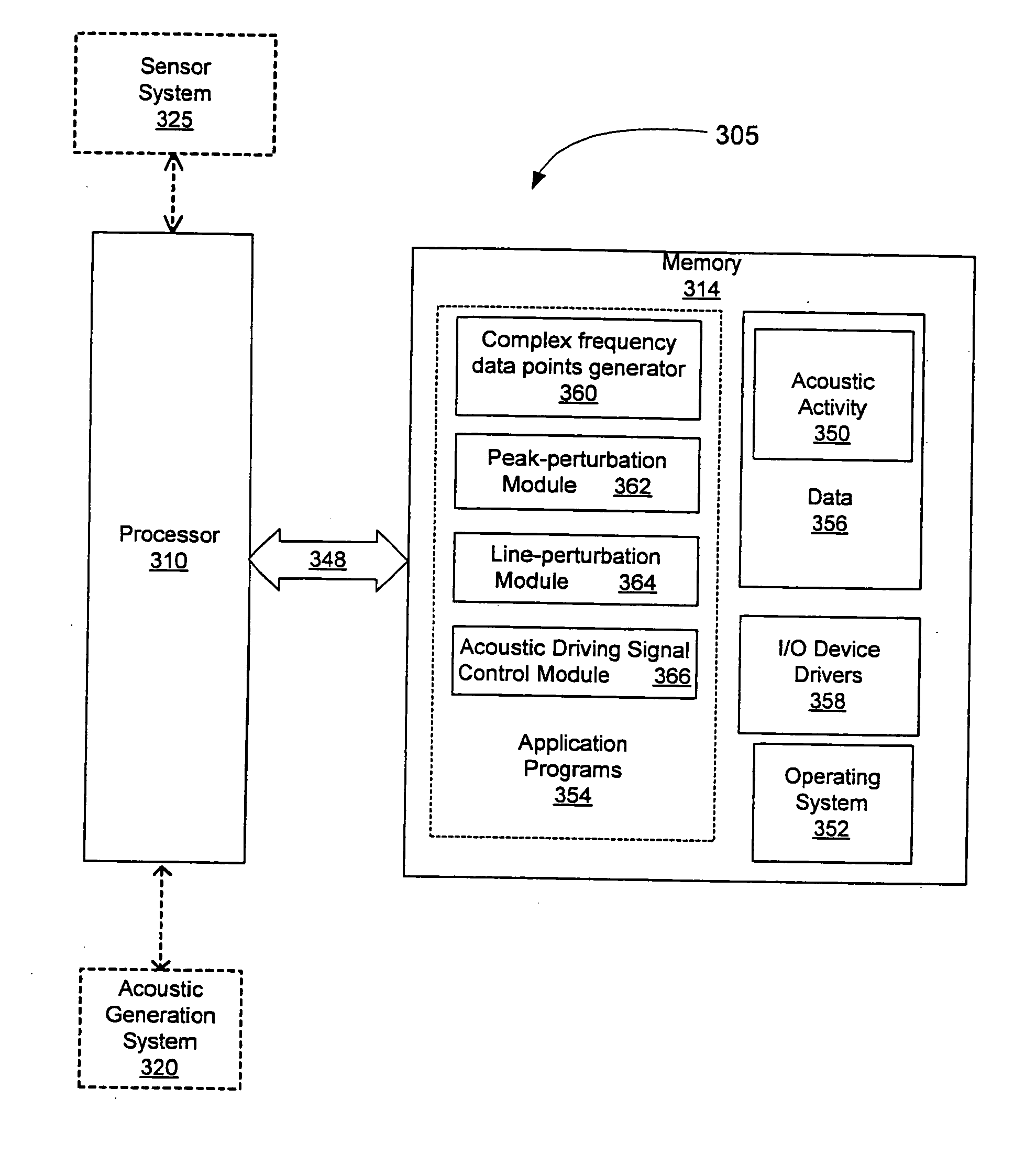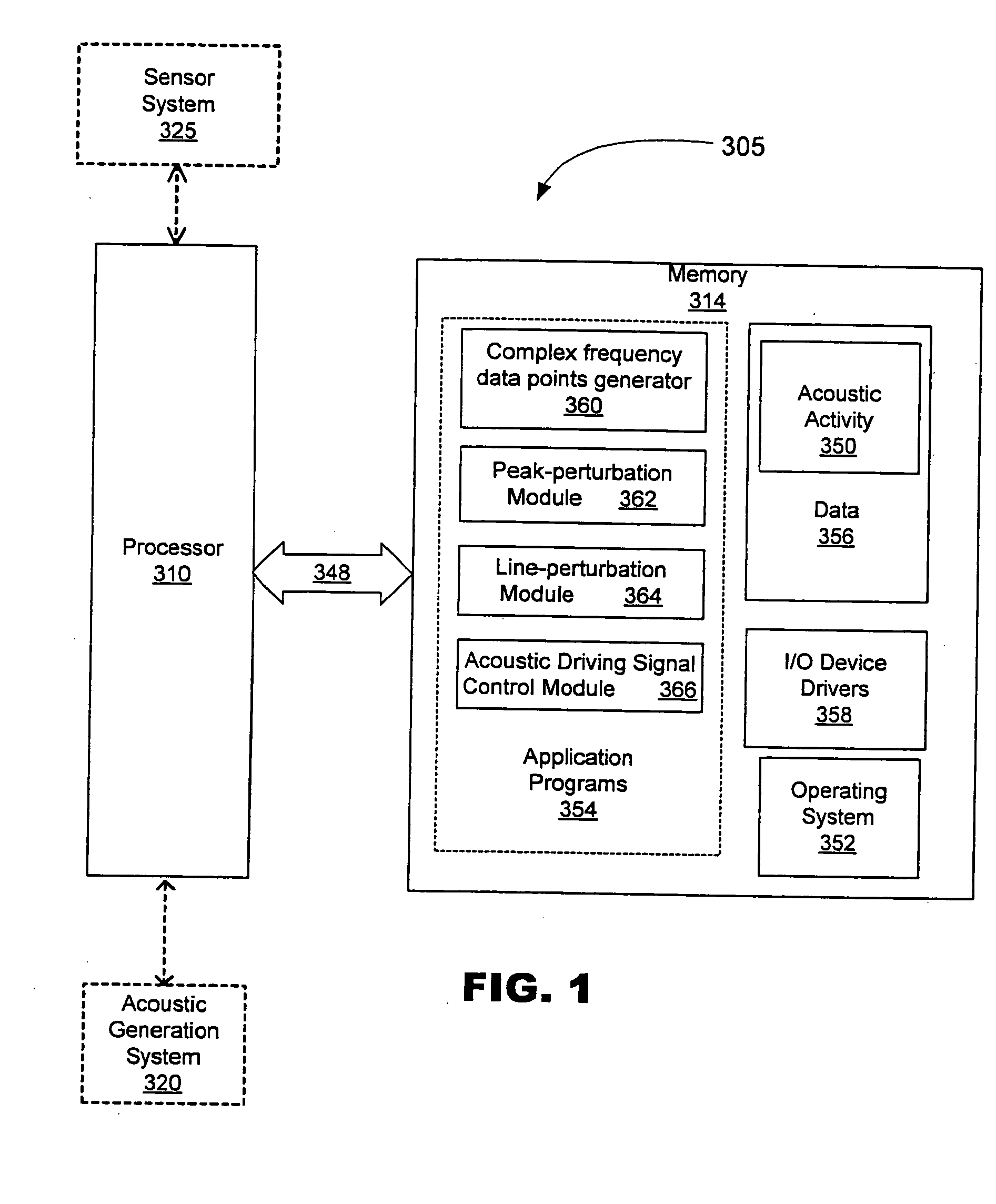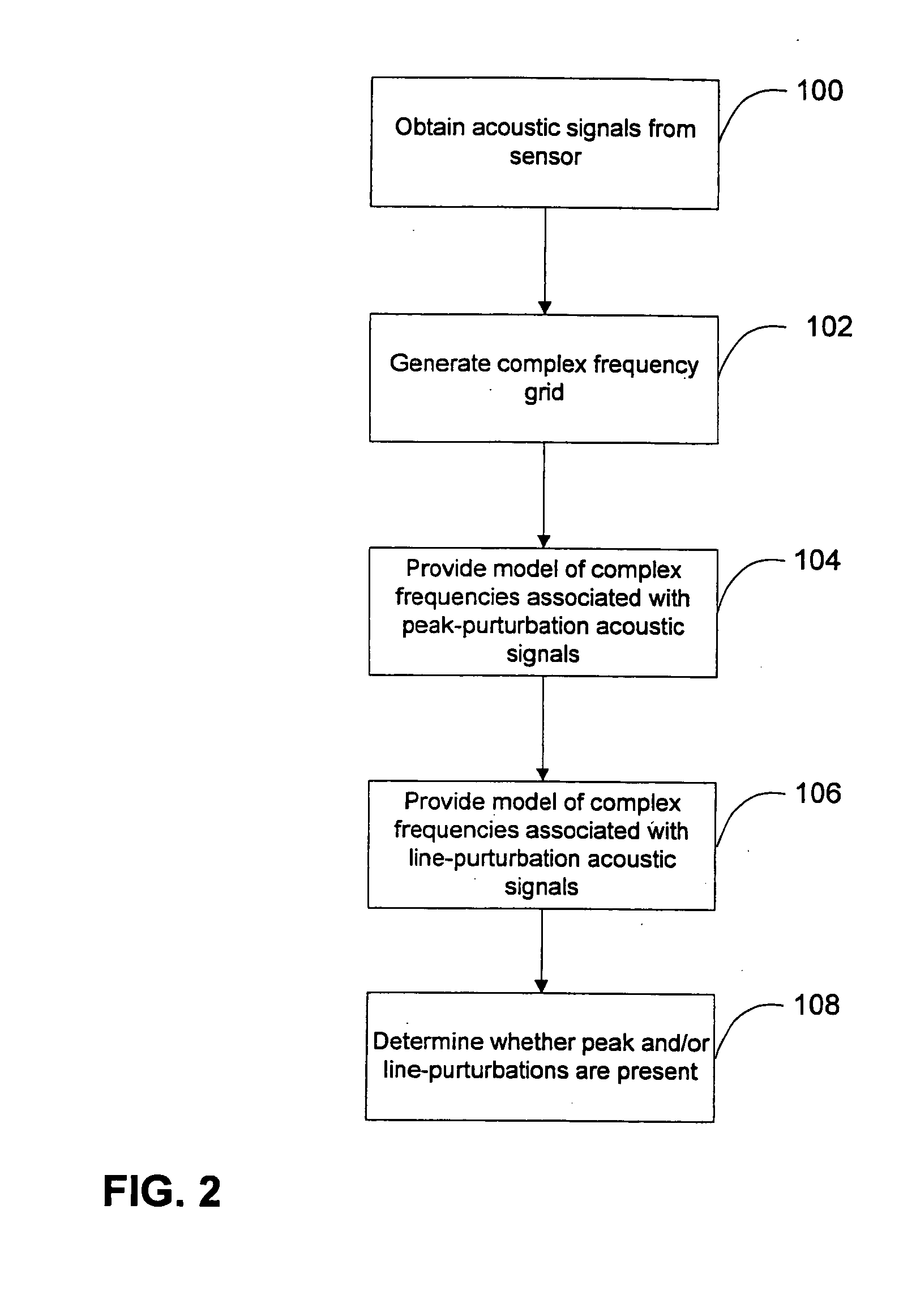Methods, systems, and computer program products for analyzing cardiovascular sounds using eigen functions
a technology of eigen functions and sound, applied in the field of acoustic signals, can solve the problems of affecting the pumping action of the heart, affecting the health of the arterial wall, and causing great harm to the plaqu
- Summary
- Abstract
- Description
- Claims
- Application Information
AI Technical Summary
Benefits of technology
Problems solved by technology
Method used
Image
Examples
example 1
[0053] A Quantum Mechanical Approach to the Modeling of Laminar Fluid Flow past a Circular Cylinder Peak-perturbation Model
[0054] The following example provides a method for theoretically predicting signals produced by single isolated boundary perturbations. Single isolated boundary perturbations may correspond to the beginning of coronary disease when particles first enter the wall of an artery and create a small bump. The corresponding waves generally move side-to-side and are localized near the arterial wall. The side-to-side sheering stresses may cause the arterial wall to oscillate at substantially the same frequency, thus producing a sound wave, which may be detected, for example, by standard piezo-electric technology.
[0055] Accordingly, the classical problem of uniform incompressible fluid flow past a circular cylinder of cross-sectional radius r=r0 can be applied. The Joukowski transformation ζ=z / r0+r0 / z converts an irrotational flow pattern into a simple steady flow over ...
example 2
[0098] Top Resonances of a Stenotic Flow Channel Line-perturbation Model
[0099] The linearized convection-diffusion model for incompressible flow through a channel with stenosis is discussed. Assuming simple harmonic motion with frequency λν0 and uniform background flow {right arrow over (u)}0(x,y), the equation for vorticity perturbation ω(t, x, y) becomes,
iλω=−Δω−(1 / ν0){right arrow over (u)}0·∇ω,−∞<x<∞,|y|→h as |x|→∞.
[0100] Applying a conformal transformation ζ(z)=ξ(x,y)+i η(x,y) to a perturbed channel region can provide an equivalent equation in new ξ,η-coordinates,
−Δω+(iλ / J)ω=(Re / 2h)2ω, −∞<ξ<∞, −1<η<1,
where J≡|ζ′(z)2 is the Jacobian of the transformation. A model may be presented which reveals that the system has two quantum wells, corresponding to bound states, and a quantum (top resonance) peak implying the existence of top resonances. It is demonstrated that there are families of spectral resonances. For example, complex frequencies occurs at
ƒ0,n=λ0ν0exp(iβn),
wh...
example 3
[0129] Sample Analysis of Applicable Frequency Range for Peak-perturbation Model and Line-perturbation Model
[0130] a) Peak-perturbation Case:
[0131] The von Kármán street is understood heuristically through the relation,
ƒ=0.212 U0 / (2r0), (3.1)
where U0 is the flow speed, r0 is the radius of the perturbation, 0.212 is the Strouhal number for a cylinder, and ƒ is the frequency of the corresponding wave observed downstream. The waves caused by flow past this object may move side-to-side. In the case of arterial flow one may expect ranges of,
0≦U0≦30 cm / s, 0≦r0≦1 cm, (3.2)
and thus the frequency can take on any positive value. However, in the typical steady state, moderate perturbation case it may be expected that,
10 cm / s≦U0≦20 cm / s, 1 mm≦r0≦5 mm, (3.3)
and this gives 10 Hz≦ƒ≦100 Hz, corresponding to ULF waves. This is within the range of what was obtained in Example 1.
[0132] b) Line-perturbation Case:
[0133] In Example 2, the formula was obtained for the main frequency rad...
PUM
 Login to View More
Login to View More Abstract
Description
Claims
Application Information
 Login to View More
Login to View More - R&D
- Intellectual Property
- Life Sciences
- Materials
- Tech Scout
- Unparalleled Data Quality
- Higher Quality Content
- 60% Fewer Hallucinations
Browse by: Latest US Patents, China's latest patents, Technical Efficacy Thesaurus, Application Domain, Technology Topic, Popular Technical Reports.
© 2025 PatSnap. All rights reserved.Legal|Privacy policy|Modern Slavery Act Transparency Statement|Sitemap|About US| Contact US: help@patsnap.com



